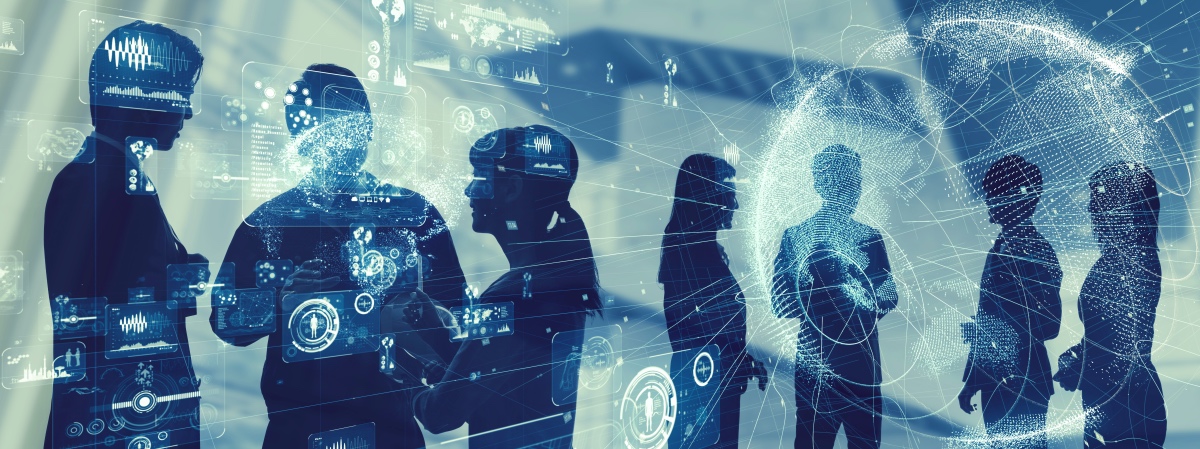
Digital Transformation (DX) describes how organizations are realizing the potential of new digital technologies – such as artificial intelligence, blockchain, big data, cloud computing, IoT, VR and drones – to bring new value to customers. Additionally, use of digital technologies also significantly cuts operating costs through automation.
The potential of digital technology to bring value to your customers is limitless. The outcome of a digital transformation is normally a step change in operational effectiveness and growth.
Recent research conducted by Harvard Business School suggests that companies that are digital laggards don’t perform as well as those that embrace digital transformation.
“Organizations that scored in the top quartile of their digital transformation index obtained much better gross margins, earnings, and net income than organizations in the bottom digital quartile. Other financial and operating indicators showed similar disparities.”
Successful use cases of Digital Transformation
According to research on ‘Digital Leaders’—i.e., organizations that were quick off the mark to adopt digital technologies—the most popular areas where Digital Transformations have succeeded include:
Customer Service
Digital technologies are making it possible to serve online customers with personalised offerings by analysing data on their shopping preferences, buying behaviors, and interactions. Capturing data from all stages in the customer relationship is the cornerstone to getting service delivery and product choices right. 3D product visualizations and configurators are at the heart of re-designing product placement in an always online digital era.
One of the more recent examples of ‘tuning customer service’ has come from Uber, who employed a college professor to help them fine-tune how they apologise for poor service delivery to maximize retention, by examining how thousands of unhappy buyers of their services responded to various ‘apology treatments’ and resolution.
Logistics and Delivery
In the U.K. town of Milton Keynes, you have to take care sometimes when walking on pavements, because you’ll be passed by drones on their way with a food order or a parcel. That’s because Milton Keynes is one of the locations being used to trial delivery by drone.
Starship Technologies, a U.K. autonomous delivery startup created in 2014 by two Skype cofounders, has been testing its beer cooler-sized robots in public since 2015. The small, white, six-wheeled vehicles trundle along pavements to bring small deliveries to residents and workers of the neighbourhoods in which they operate, without the need for a human driver or delivery person. The Milton Keynes operation is the first commercial deployment in the UK, and started in mid-March, just as the country was implementing widespread social distancing in an effort to tackle the spread of coronavirus. Residents can download the Deliveroo-style Starship Deliveries app to buy cooked food and small orders from supermarkets, which gets loaded into the robots and driven to them.
Another company investing in drone delivery is Amazon. In 2013 Amazon’s boss, Jeff Bezos, launched Amazon Prime Air and announced an intention to begin offering flying deliveries direct to the home within five years. Amazon Scout, a service employing six squat six-wheeled delivery robots, across Snohomish County, Washington, just north of its Seattle HQ.
“These devices were created by Amazon, are the size of a small cooler and roll along sidewalks at a walking pace,” the head of the Scout project, Sean Scott. “The devices will autonomously follow their delivery route but will initially be accompanied by an Amazon employee. “We developed Amazon Scout at our research and development lab in Seattle, ensuring the devices can safely and efficiently navigate around pets, pedestrians and anything else in their path.”
Prototyping
Two other digital technologies to find a place in the Digital Transformation landscape are 3D Printing and Virtual Reality. These technologies are making it possible to prototype new ideas and designs without having to manually create a prototype or mockup that used to take days and weeks to produced, and required a high-level of craftsmanship. Today, a 3D printer can produce a 3D model of a guitar, cup, cog or coke can in minutes—speeding time to value and enhancing possibilities for product personalization and tailoring to suit discerning customer needs
Smart Devices
Smart devices are everywhere these days, Amazon Echo smart speakers, smart fridges, utility meters etc. These devices represent a key construct in the digital transformation story because they are creating a seismic shift in the amount of data captured, and the possibilities to use data to make decisions.
Not many people know it, but we probably have Coca-Cola to thank for what has become known as the IoT revolution. The main concept of a network of smart devices began back in 1982, with a modified Coca-Cola vending machine at Carnegie Mellon University being the first internet-connected appliance. Its was capable of reporting on its inventory and whether newly loaded drinks were cold or not.
Governments and municipalities are now considering how they can engineer IoT powered smart digital cities, equipped with sensor devices to manage traffic flows, control emissions, control crowds and keep the lights on.
Unit E.4 is the centre of competence for Internet of Things (IoT). They are responsible for the policy, research, standardisation, adoption and take up of IoT and new business models stemming from IoT, ensuring the competitiveness of the European industry. The Unit advances strategic and policy issues around numbering and addressing, promotes and implements soft law and/or legislative initiatives relevant to IoT in the context of the DSM, including IoT liabilities, a trusted IoT label, IoT platforms, IoT standardisation. It fosters the development of IoT innovation ecosystems and promotes global cooperation. The unit is in close collaboration with stakeholders such as the Alliance for IoT Innovation (AIOTI) and is working in industrial partnerships in the context of steering, exploiting and reinforcing the impact of the research and innovation programme, Horizon 2020. The Unit coordinates research activities in the area.
(Note: The author is one of the private members to serve on the AIOTI and contributed to strategies for IoT digital city evolution).


Recent Comments